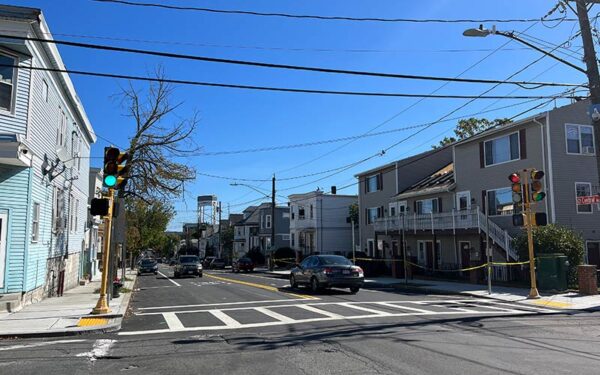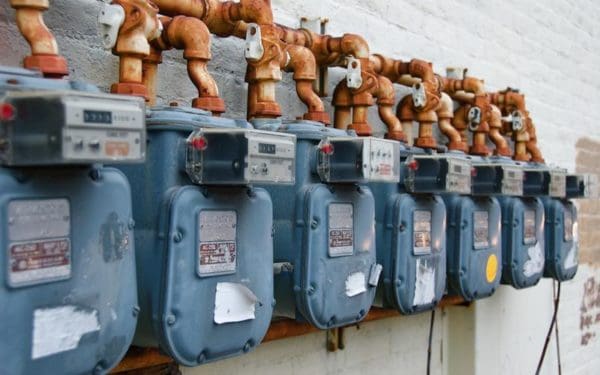
Invenergy's proposed dirty power plant is as good as dead, even if the company doesn't yet seem to realize it. Photo: David Masaka via Shutterstock
Invenergy is a zombie. By “zombie,” I mean the company’s proposed fracked gas and diesel fuel power plant is as good as dead. Invenergy may not be aware yet that its plant is as good as dead – that’s why Invenergy is still walking around. But it is as good as dead. Two different sets of circumstances lead to this conclusion.
The first of those circumstances is the decision by New England’s electric grid operator to disqualify Invenergy from the upcoming Forward Capacity Auction. You can read more about that decision here.
The second is the recent disclosure of two bombshell lawsuits pertaining to the company’s proposed power plant at the Federal Energy Regulatory Commission (FERC) in Washington.
What the FERC Lawsuits Are About
The two lawsuits pending at FERC are about who should pay the hundreds of millions of dollars it will cost to connect the proposed Invenergy power plant to the electricity grid. The thrust in both lawsuits is that Invenergy wants to fob off onto electricity customers several hundred million dollars in interconnection costs that Invenergy is legally required to pay itself.
There are only two possibilities of what can happen in the two FERC lawsuits, and both of the options are very, very bad for Invenergy:
- If Invenergy wins, it will get to shift hundreds of millions of dollars in costs onto New England electricity customers (so we all would see higher electric bills). Rhode Island’s Energy Facilities Siting Board would never grant a permit to Invenergy under those circumstances.
- If Invenergy loses, it will be forced to spend these hundreds of millions of dollars itself; this is something that Invenergy has already told the regional grid operator, ISO-NE, it won’t do before getting its permit from the Siting Board. Without Invenergy spending this money, the power plant can’t connect to New England’s electric grid. With no interconnection, there is no power plant. Thus, if Invenergy loses, no power plant would be built.
Invenergy Once Again Withheld Crucial Information from the Siting Board
Since October 2015, the Energy Facilities Siting Board has been conducting a legal proceeding to determine whether or not to grant Invenergy a permit to build its proposed power plant. Throughout this proceeding (and for a year before it started), Invenergy never disclosed to the Siting Board that it (Invenergy) does not have an agreement with National Grid, which owns the power lines in Rhode Island, to connect the proposed plant to the electric grid.
At the Siting Board hearing on Monday, November 27, CLF and Burrillville “outed” Invenergy, revealing the company’s failure both to obtain an agreement with National Grid and to tell the Siting Board about that failure. Invenergy was furious that we brought to light their years-long attempt to conceal this crucial information.
The implication of CLF’s disclosure was huge: If Invenergy cannot interconnect its power plant to the ISO-run electricity grid, then the plant cannot be built. No interconnection, no power plant.
As a result of CLF “outing” Invenergy, on December 1, Invenergy’s John Niland sent a letter to the Siting Board, admitting, for the first time, that, yes, there are two recently filed lawsuits pending at FERC pertaining to Invenergy’s interconnection.
But Niland made a serious, unforced error by badly misrepresenting the lawsuits in his short letter – he pretended that they did not mean much and, anyway, would be over in 60 days.
CLF and Burrillville needed to set the record straight so we immediately sent the Siting Board a letter explaining just what a huge deal these two Invenergy lawsuits are. Our letter also asked the Siting Board to schedule a “show-cause hearing” at which Invenergy would be forced to come up with any possible reason why the state permitting process should not be halted completely until the two lawsuits at FERC are resolved.
Siting Board Orders Invenergy to Show Why Permitting Process Should Continue
Early Monday morning, December 11, we hit the “send” button on our letter to the Siting Board. One day later, on Tuesday, December 12, the Siting Board agreed with us. The show-cause hearing CLF requested is now scheduled for Tuesday, January 30. Attending this hearing is a good way to show the Siting Board, reporters, and the whole world that you are opposed to Invenergy.
At that show-cause hearing, the Siting Board is likely to suspend the case indefinitely because it – rightly – wants to know the outcome of the FERC lawsuits before moving ahead with the Invenergy docket here.
What This Means for the Proposed Power Plant
We have not stopped this proposed polluting power plant yet, but what happened on December 12 was a huge victory for the anti-Invenergy side. The problem for Invenergy is that what CLF and Burrillville said in our letter is true: regardless of how the FERC lawsuits turn out, it will have enormous implications for Invenergy. And the Siting Board needs to know the results of the lawsuits before going ahead.
It is likely that, at the upcoming show-cause hearing, the Invenergy docket will be suspended, pending the outcome of the FERC cases. And although Invenergy told the Siting Board that FERC will rule on the lawsuits within 60 days, in fact, it could take FERC a year or more.
And at the end of the FERC litigation, Invenergy will have exactly the same problem it has today: If Invenergy wins at FERC, it would be shifting hundreds of millions of dollars in interconnection costs onto all of us – electricity customers – and the Siting Board will never go along with that. If Invenergy loses, it will have to pay that money itself, which the company has said it will not do before receiving a Siting Board permit.
As I say, the case is not yet over, but Invenergy is a zombie.



